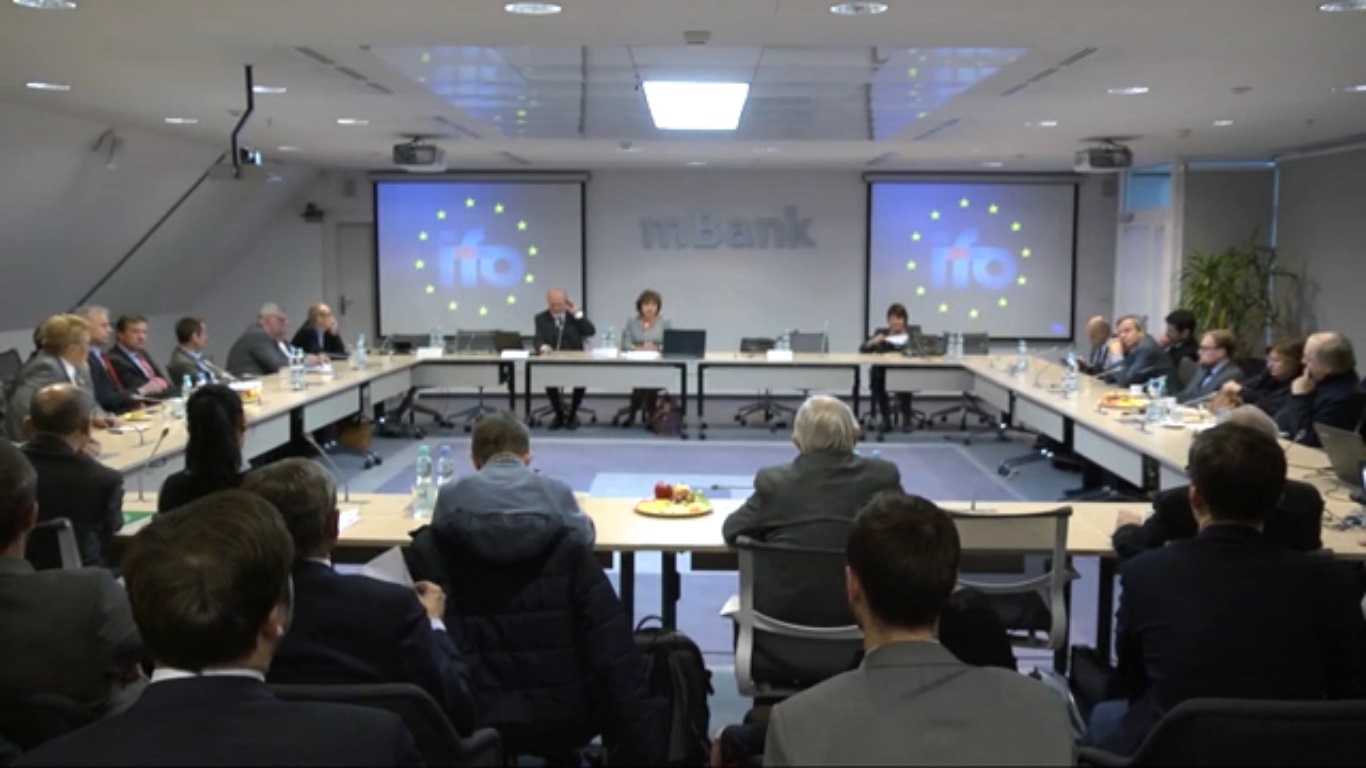Prof. Hans-Werner Sinn: "The European crisis is not just really one crisis, there are waves of the crisis"

"That what we call the European crisis is not just a one event, there are waves of the crisis" – said Hans-Werner Sinn, Professor of Economics and Public Finance at the University of Munich, President of the Ifo Institute for Economic Research, Director of the University of Munich’s Center for Economic Studies and Director of CESifo, the guest of 141st mBank-CASE seminar “The European crisis”, held on 26 November 2015.
“The first wave of crisis started in the autumn 2008, when the US investment bank Lehman Brothers collapsed. After the slowdown, the global economy started to cope a little better, many said that the worst was already behind us. The situation worsened at the end of 2009. The crisis reached its climax in May 2010, when Greece had to finally introduce rescue packages (the second wave of crisis). The third wave resulted from the rapid flight of capital from Italy and Spain in summer 2011. That situation did not change until summer 2012. A slight improvement was observed following the implementation of the rescue program initiated by the European Central Bank – the capital slowly returned to the distressed countries. The situation remained stable until autumn 2014. Since then we have dealt with the fourth wave of the crisis, which has affected mainly Greece. Given that, we should be aware that problems we currently face are not the end of crisis, but they are its another wave – said prof. Sinn.

In Prof. Sinn’s view, we should analyze causes of the crisis. The bubble burst in Southern Europe led to a decline in the competitiveness of the economies of Greece, Spain, Portugal, Italy and Cyprus. Incumbents implemented rescue programs, which improved the accounting situation of these countries. As far as Greece is concerned, the gap between the value of imports and exports decreased and currently there is no trade deficit. This situation, however, is the result of falling value of import, not an improvement of the competitiveness of the Greek economy.
According to some commentators, Spain is an example of the country that managed to successfully fight the economic difficulties. Problems that the country faced on account of the bankruptcy of Lehman Brothers, were being solved more efficiently than in Greece, but the Spanish economy was not able to return to its pre-crisis level. The trend in import is similar to the one observed in Greece, but due to the fact that the value of export slightly exceeded import, the country managed to achieve trade surplus. Given that, also in the Spain’s case we cannot say that the economic situation improved because of increase in competitiveness. Quite the opposite – it is a token of the Spanish economic downturn. The recovery means that employment level increases and the economy regains its balance.

Governments were borrowing to have funds to raise salaries in the public administration, while were taking loans to invest in the real estate market (it brought a boom in the real estate market and growth in employment and wages in the sector). The improvement in the economic situation was not associated with improving competitiveness – the pay rises in the government and real estate sectors were financed with loans, which resulted in the loss of competitiveness of countries in Southern Europe. According to Prof. Sinn, this is the main cause of current problems. Until capital markets wanted to refinance the loans, the situation was under control. Difficulties emerged when the European crisis broke out, which was sparked (and strongly interrelated with) the worsening situation on the US market. As a result, risk aversion increased, which brought rises in bond spreads – investors feared that those countries will not be able to pay back their liabilities (there were concerns that because of inflation and devaluation, bonds will not be repurchased). In short, this is how the crisis and its waves can be described – he said.
